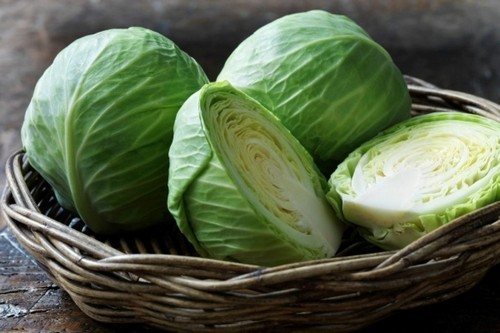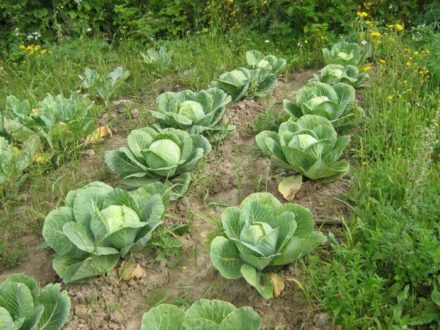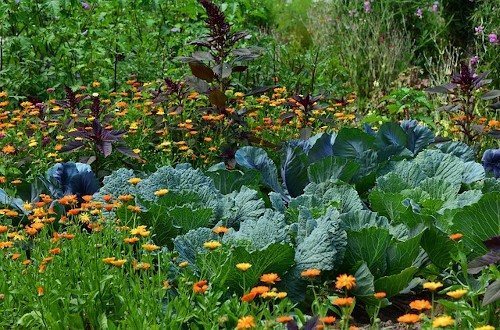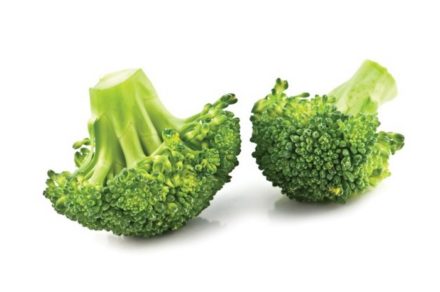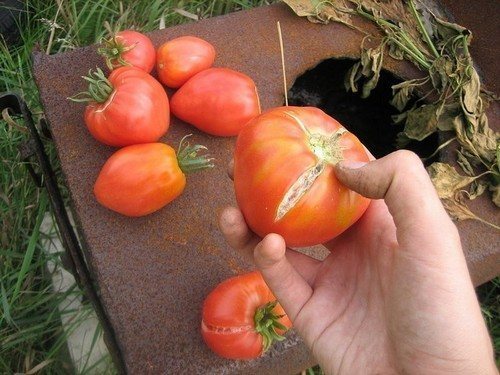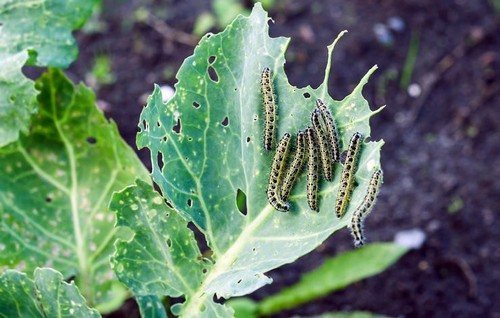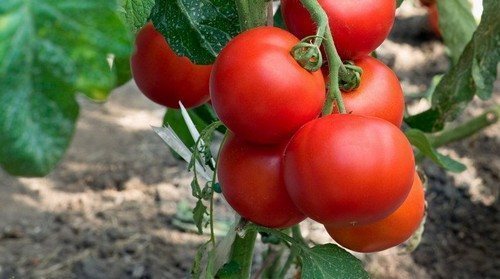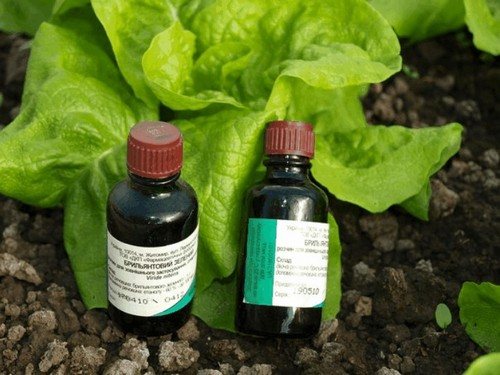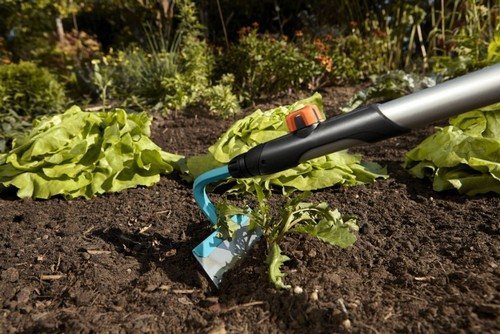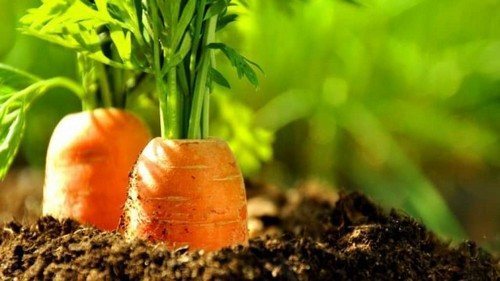White cabbage is very popular among gardeners; people also call it “lady”. The benefits of this vegetable, its nutritional and medicinal properties have long been known. Cabbage is very tasty and produces a good harvest; it can be stored fresh for a long time. There are a large number of ways to prepare this vegetable. If the size of the head of cabbage is very important, then it is better to choose mid-late and late-ripening varieties. Late varieties have a high yield and last well all winter.
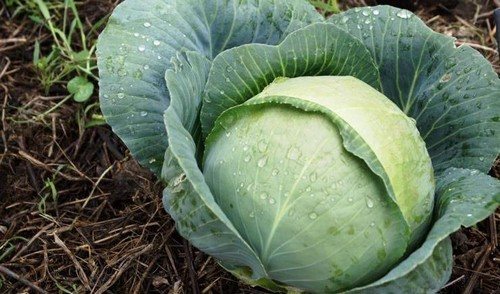
There are many articles about growing and caring for cabbage. There are no particular difficulties, but there are several requirements that must be met.
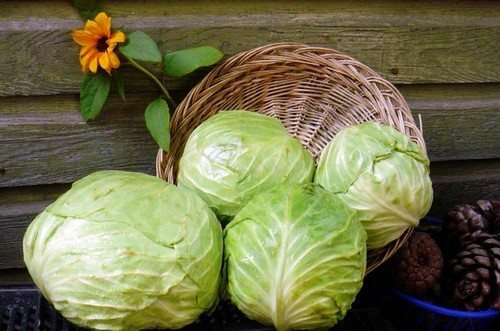
Growing seedlings and caring for them.
Before planting, the seeds need to be kept in warm water, dried and sown in furrows 1 cm deep. The distance between the rows should be 5-6 cm. After germination, the seedlings should be watered with settled, warm water.
You should start planting seedlings after the first true leaf appears. Daytime temperature should be at least +18 degrees, nighttime + 8°C. There should also be good lighting and moderate humidity. It is best to plant seedlings in peat pots or plastic cups, so that when planting in open ground, it causes less harm to the seedlings and does not expose them to stress.
After the first two true leaves appear, the first fertilizing is done, for example, you can use “Zdraven”. The second feeding is carried out after 10 days; you can use mullein diluted in water.
A couple of weeks before planting, seedlings need to begin hardening off. Hardening should begin with 30 minutes. per day, adding 45-60 minutes every day. The last days you can leave it overnight. Hardening strengthens the seedlings and allows them to withstand unexpected frosts.
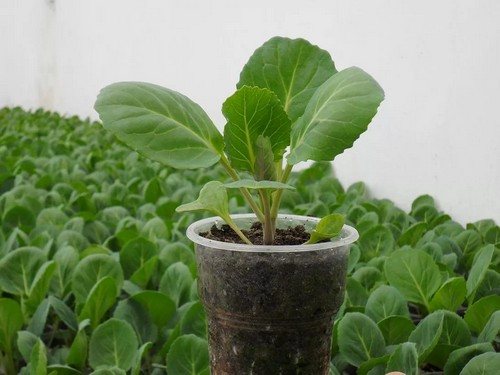
Preparing the soil before planting and planting seedlings in open ground.
The soil for planting is prepared in advance in the fall. Well, if you don’t have time, then a month before landing. Cabbage loves loose, nutritious soil rich in nitrogen. It also grows well after applying mineral and organic fertilizers. It is strictly forbidden to plant seedlings immediately after applying fertilizers. Cabbage will grow best after cucumbers, beets, potatoes, legumes and onions. If the soil is highly acidic, wood ash or slaked lime will help cope.
Each gardener independently calculates the time for planting seedlings, depending on the climatic conditions of the region where he lives.
Planting seedlings in a permanent place should follow a 90x90 cm pattern. To obtain large heads of cabbage, cabbage needs a lot of space so that it can spread its leaves freely.
When planting, you can make a large hole by adding compost and ash. Pour water on top and wait until it is absorbed. Then add soil, mix and plant the seedling. Seedlings are planted deep, up to the first true leaves. The seven-lobed leaves are first removed.
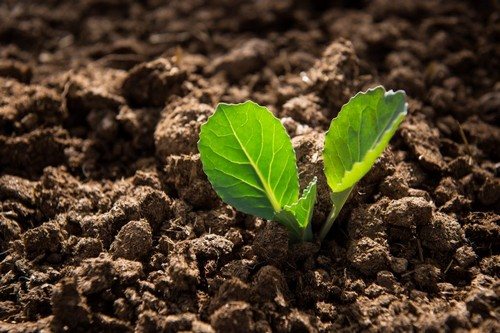
Caring for seedlings in open ground.
Cabbage loves water very much, so cabbage needs to be watered daily during the first week. In subsequent days as necessary.Watering should be done in the evening. Periodically, before watering, you need to loosen the soil, feeding the root system with oxygen. On average, one cabbage bush consumes from 5 to 10 liters. water. It is very important to water during the growing season, otherwise the head may not set. After formation, it is better to limit watering to avoid various misfortunes.
Feeding is carried out 3-4 times per season.
- The first fertilizing is necessary when no fertilizers were added during planting. The first fertilizing is carried out three weeks after planting with mineral or organic fertilizer;
- the second feeding is carried out two weeks later, with a pre-prepared liquid solution. To a ten-liter bucket of water you can add 1 liter of infused ash (for at least 3 days) and 0.5 kg of bird droppings;
- the third feeding is carried out 10 days after the 2nd feeding. Per sq. meter 7 liters of liquid fertilizer, at the rate of: add 0.5 kg of chicken manure, 0.5 liters of mullein and 30 grams to 10 liters of water. superphosphate;
- The fourth feeding is carried out for late-ripening cabbage varieties. Apply three weeks before harvest. Necessary for long-term storage of heads of cabbage in winter. For 10 liters of water add 0.5 liters of ash infusion or 40 grams. sulfuric acid potassium.
It is better to fertilize in the evening.
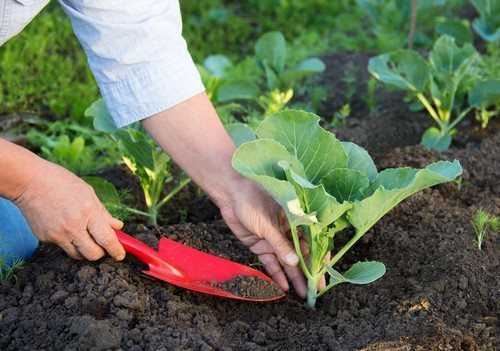
Protecting cabbage from harmful insects.
Somewhere in June the first harmful insects begin to appear. If you don’t start fighting them in time, you can forget about a rich harvest.
Harmful insects that can harm cabbage include:
Cruciferous flea beetle - has a silvery color, is difficult to notice, moves quickly, loves young leaves. If small holes begin to appear on the cabbage, then urgent measures need to be taken. It can be dealt with using both folk remedies and special preparations.
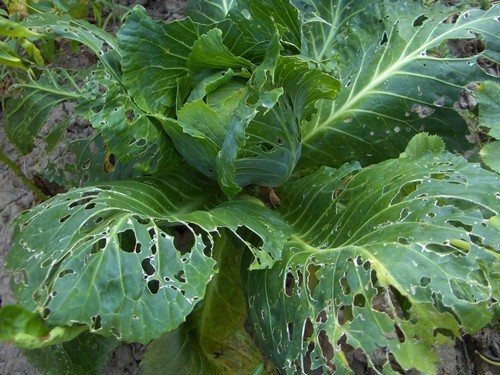
The cabbage butterfly is the most dangerous pest, capable of laying millions of eggs, from which yellow caterpillars subsequently appear. They are capable of destroying the entire crop completely. Experienced gardeners recommend spraying the plant with an infusion of liquid soap (1 tbsp) with wood ash (2 cups) per 10 liters of water.
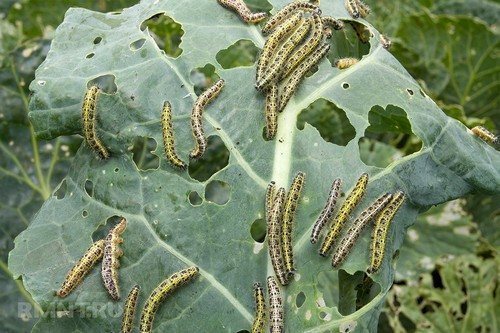
Slugs and snails are very fond of cabbage leaves; they are attracted to the increased humidity inside the cabbage leaves. To combat such pests, experienced gardeners recommend spraying the heads of cabbage with dissolved ammonia or installing traps. There are also a lot of folk remedies to combat these pests.
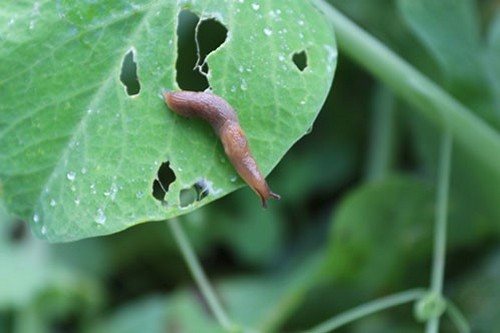
Harvesting and storage.
For harvesting, it is better to choose a warm, not rainy autumn day. Temperatures can range from +2 to +8 degrees during the day and from 0 to -3 at night. If it is time to harvest the crop, and the rains continue, then it is necessary to dry the harvested crop under a canopy, and then transfer it to the cellar. Cabbage hit by a little frost will only be sweeter.
For long-term storage of heads of cabbage, they need to be pulled out by the roots, cleaned of soil and top leaves and hung from the ceiling on some kind of crossbar. It is advisable to arrange the heads of cabbage so that they do not touch each other.
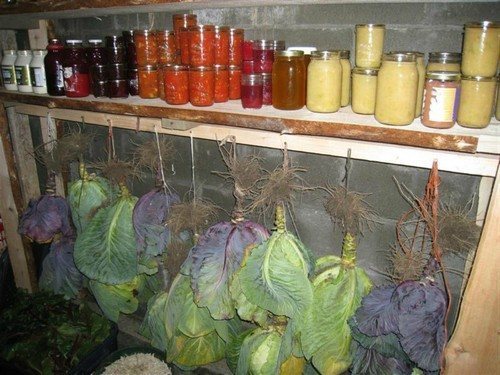
If you follow the basic tips, you can get a rich and high-quality harvest that will last in the cellar all winter.


